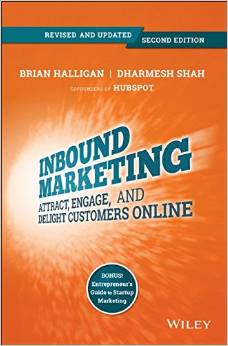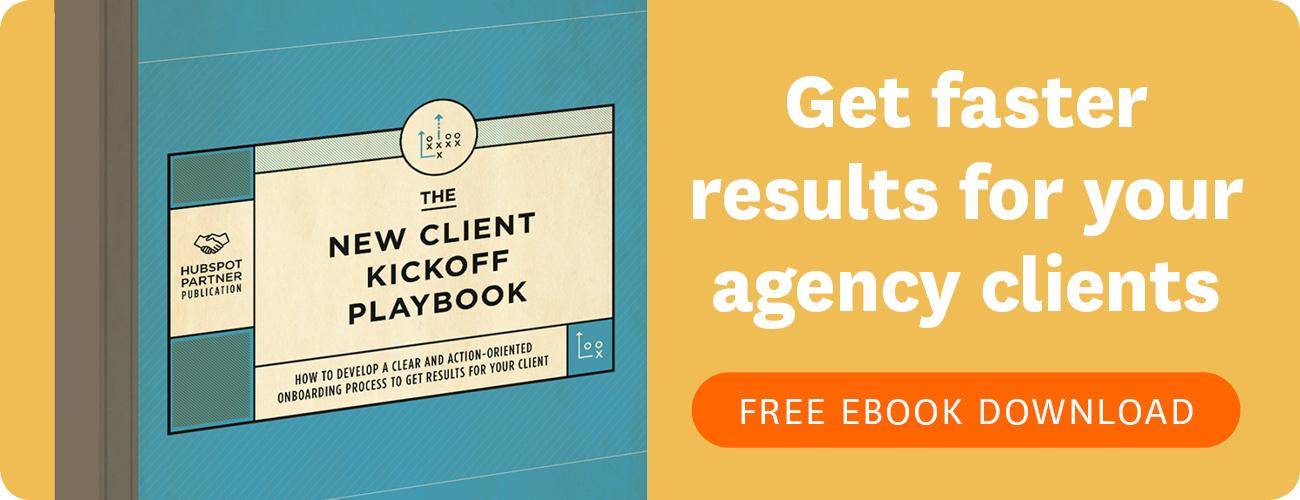 Recently, hubspot founders Brian Halligan and Dharmesh Shah have revised their popular book, Inbound Marketing: Attract, Engage and Delight Customers Online. The new book is available now through Amazon and other retailers.
Recently, hubspot founders Brian Halligan and Dharmesh Shah have revised their popular book, Inbound Marketing: Attract, Engage and Delight Customers Online. The new book is available now through Amazon and other retailers.
I’ve had a chance to read through the revised edition, and I think the authors have done a great job of demystifying inbound techniques for small businesses, as well as clearing away some of the outdated techniques and platforms.
This industry changes so fast, it can be hard to decide what to include in a book like this. For example, the authors have removed a lot of information about the importance of Digg (a social sharing platform that was huge when the first edition came out, but now doesn’t exist) and added a lot of detail about the importance of LinkedIn as a platform for growing your profile online.
The key thing to remember about Inbound Marketing is that it is a great handbook for the business owner who needs a beginners guide to inbound marketing. It is not a textbook for professionals in the industry. If you’ve been doing inbound for a few years, you may pick up a few titbits, but mostly it’s familiar territory. The value of Inbound Marketing comes from its ability to unleash change in small business owners. I would’ve loved to have had this book available at the beginning of my career, and I’d recommend it to every small business owner I know.
The book includes an awesome case study in every chapter. My favorite was on from the beginning of the book about the Grateful Dead.
“From an early inbound marketing perspective, the Grateful Dead did everything right: They had a remarkable product (sound); they marketed that product to a rabid, niche market; and they ignored conventional wisdom about how to compete for dollars in the music business by making the concert, not album sales, their main revenue source. They ended up creating a movement that transcended the music itself—a strategy that enabled them to be one of the highest-grossing bands of all time.”
So, while you are not the Grateful Dead, what can you learn about inbound marketing from this book as a small business owner? Here are my top 5 takeaways:
1. Your Website is a Hub, Not a Megaphone
On your website, you should be thinking about how to connect with customers in a meaningful way, becoming a place they come to learn more information, interact with other users, have a laugh, and give feedback. You website isn’t a place where you (metaphorically) yell through a megaphone about how awesome you are.
The authors explain how your website should be more about your customers than it is about you:
"Ten years ago, your marketing effectiveness was a function of the width of your wallet. Today, your marketing effectiveness is a function of the width of your brain."
2. How Google Works and Why You Should Care
One of the best elements of this book was the chapter on Google. The authors outline in simple, no nonsense language exactly how Google works. This confuses a lot of small business owners, which means they tend to trust the first SEO guys they come across, and that can be bad news.
The authors also outlined some of the most common black hat SEO techniques, such as cloaking and link farming. This ensures that when a company goes to hire an SEO specialist, they can look at the specialists offerings with a critical eye. Often you see companies explaining how important it is to avoid black hat techniques, but not what they are.
3. You Should Create Remarkable Content
By creating remarkable content, your company will attract links from other authoritative websites, and as you’ve learned in the SEO chapter, this is very important thing to have. So what IS remarkable content? Our intrepid authors will tell you:
“What do we mean by “remarkable”? We borrowed the term from Seth Godin who uses it in place of the word “unique,” and we took the liberty of italicizing “remark” in order to prompt you to ask yourself whether your product or service is worthy of other people’s “remarks.”
Examples of the type of content you could create include blog posts, white papers, infographics, videos, webinars, and podcasts. Whatever it is, this remarkable Content is the cornerstone of your inbound campaign.
4. Tracking Your Marketing Efforts is As Important As the Efforts Themselves (Maybe Even More So)
“You can be getting hundreds of leads every month but if these leads don’t convert over time, you’re either not creating the right kind of remarkable content targeted to your audience or you have offers that bring in lots of untargeted traffic.”
Throughout the book - but particularly in the section on converting leads into customers, the authors stress the importance of tracking and measuring everything you do. They don’t just say “Oh, you must track” - they talk about the different types of metrics you can gather, and what those actually mean. They explain a system for grading leads in order to see if you’re targeting the right people, or not.
5. If You Can’t Do It Yourself, Hire Experts
For me, this section of the book was one of my favorites, as it’s covers an issue that isn’t often dealt with in marketing books. You see, marketing books are written to try to tell you marketing is easy, no worries, you’ll get the hang of it. But the truth is, you might not. You might read everything there is to know about inbound marketing and still not be able to create anything shareable. You might be too busy … I don’t know … running your business to focus on the marketing side.
What do you do? You need to hire an expert.
In chapters 14 and 15 the authors cover hiring awesome people from your team and working with a dedicated PR agency. They walk a business owner thought exactly what to look for in a candidate, a method for hiring, and tips for training up current marketers.
“Some people seem to really “get” the Internet and are naturally curious about it and others aren’t. Instead of being digital tourists who are just passing through and will take in a site here or there—they are digital citizens. They are committed to the Internet—they are comfortable on the web and live there for some portion of their lives.”
They then go on to show how a business can work alongside a PR agency to really get a push from your Inbound marketing. But because PR agencies work largely with print media, it can often be a struggle to gain any meaningful results. One thing the authors suggest is to put the prospective agency and some of their clients’ websites through the Hubspot Website Grader tool, which will show if they are walking the walking.
There’s plenty more in Inbound Marketing: Attract, Engage & Delight Customers Online for you to devour and implement. I’ll leave you with this final quote that I think sums up why these guys are awesome and why inbound marketing should be an integral part of your business strategy moving forward.
“Marketing is more fun than ever! When was the last time you got excited about buying yet another contact list of people you could interrupt? Never, right? Creating content and engaging with buyers on social networks is empowering. Inbound marketing is fun, and with it comes a more rewarding way to live.”






